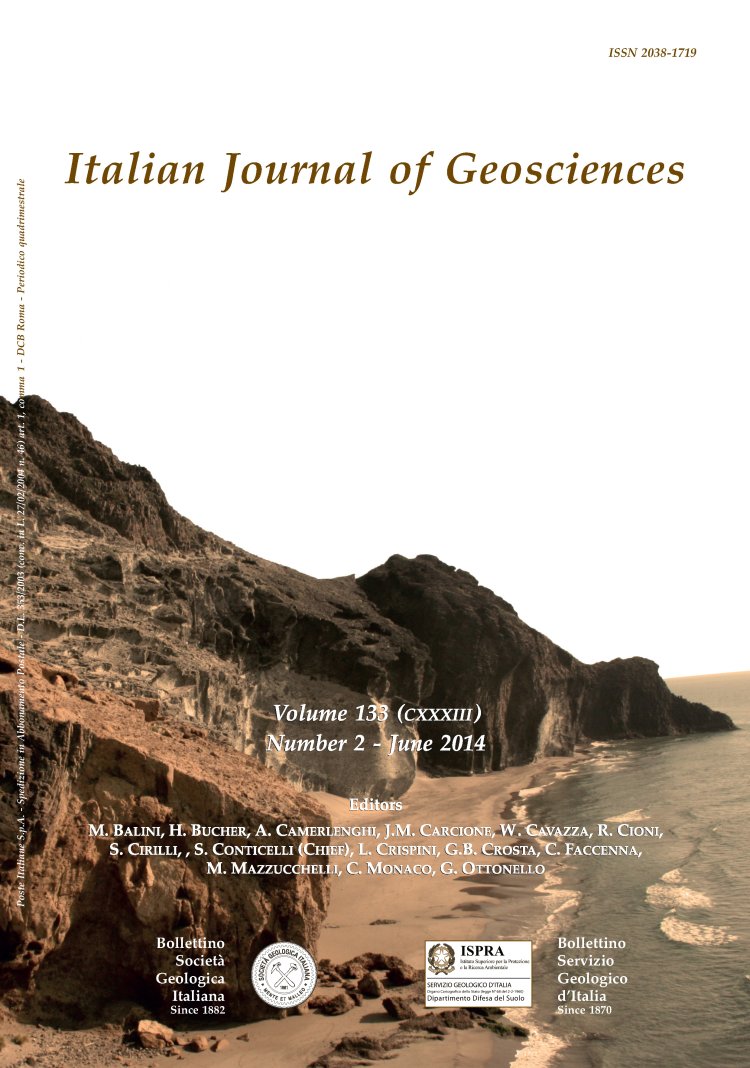
Applied stratigraphy and carbonate petrography of the Arabescato Orobico dimension stone from the Bergamasc Alps (Calcare Rosso, Italy)
Gabriele Vola (*) & Flavio Jadoul (**)
(*) Gabriele Vola, Geologist, dimension stone and building materials consultant, via Finazzi 12, 24127, Bergamo, e-mail: gabriele.vola@gmail.com.
(**) Flavio Jadoul, Università degli Studi di Milano, Dipartimento di Scienze della Terra “A. Desio”, via Mangiagalli, 34 - 20133, Milano, e-mail: flavio.jadoul@unimi.it.
Volume: 133 (2014) f.2
Pages: 294-314
Abstract
The Arabescato Orobico is a decorative stone and building material from the Bergamasc Alps, Italy. From the geological standpoint it belongs to the Calcare Rosso, latest Ladinian-Early Carnian in age, which is a peritidal tepee-rich limestone strongly modified by superimposed early diagenetic processes, outcropping in Lombardy Southern Alps. In the last twenty-five years four commercial varieties have been available on the market, namely Grigio, Grigio-Rosa, Rosa, and Rosso, whose working and abandoned quarries, are located around the extraction districts of Camerata Cornello, and San Giovanni Bianco in the median Brembana Valley. Until the 1970s of the last century some different historical types, namely Rosso Antico, Rosso Venato, and Venato Finissimo, where extracted around Ardesio, in the Seriana Valley, as well. This paper deals with the stratigraphic analysis based on detailed physical correlations of several marker horizons mainly recognized along abandoned and active quarries, and their carbonate facies analysis. Stratigraphic results permit to divide the Calcare Rosso unit in three lithozones (CR1, CR2, and CR3), with a very low angle onlapping geometry at the top of the Esino Limestone. Southward (basinward) the Calcare Rosso gradually passes to dominant grey peritidal carbonates poor in tepee
horizons corresponding to the lower Breno Fm.. The petrographic characterization of representative samples from Mecca and Cadei quarries, permits to distinguish peculiar textural and compositional features of the four contemporaneous commercial types. As concerns the Grigio we identify almost five different subtypes, respectively
denominated Grigio Laguna, composed of fossiliferous subintertidal grey to dark grey and black wackestone-packstones, Grigio Granulare, composed of inter-supratidal pisolitic grey grainstonerudstones, Nero Raggiato, very rich in “raggioni”, dark grey to black fibrous-radial early diagenetic calcite, Grigio Laminato composed of poorly to middle deformed antiformal structures, namely embryo to mature tepees, and, finally, Grigio Brecciato, a grey-colored diagenetic-pedogenetic breccia. Remaining types, ascribed to pinkishgrey, Grigio-Rosa, pinkish, Rosa, and reddish, Rosso, colored diagenetic supratidal facies, can be divided into laminated or brecciated subtypes. The former are composed of antiformal syndepositional to early diagenetic structures, i.e. embryo to mature tepees; the brecciated subtypes consist of more diagenetically modified senile tepees passing to breccias. These types present different amounts of sediment filling, including internal calcitic and dolomitic sediments, pisolites, terra-rossa paleosols and green/reddish clays, and early cementation, such as fibrous isopachous crust, “raggioni”, sparry calcite, of the primary and early diagenetic cavities. The stratigraphic organization, and the facies analysis of this carbonate succession, have been used to evaluate the areal and vertical distribution of the Arabescato Orobico commercial types; in this way the Calcare Rosso depositional model is also suitable for geological prospecting and quarrying activities.
Keywords
Calcare Rosso, Arabescato Orobico dimension stone, carbonate petrography, applied stratigraphy, Lombardy Southern Alps.
Get Full Text